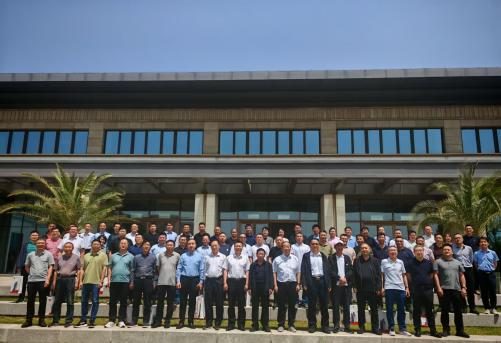Understanding Metal Smelting Vibration Screens: Essential Insights for the Manufacturing Industry
Release Date:
2025-06-16
In the manufacturing industry, particularly within the realms of engineering and construction machinery, the role of metal smelting vibration screens cannot be overlooked. These screens serve a critical function in the metal smelting process, where the extraction of metals from their ores requires precise and efficient separation methods. By understanding the mechanics and benefits of these vibrat
In the manufacturing industry, particularly within the realms of engineering and construction machinery, the role of metal smelting vibration screens cannot be overlooked. These screens serve a critical function in the metal smelting process, where the extraction of metals from their ores requires precise and efficient separation methods. By understanding the mechanics and benefits of these vibration screens, manufacturers can significantly improve their operational efficiency.
Metal smelting vibration screens utilize vibration to separate metal materials from impurities and unwanted contaminants. The vibration mechanism ensures that materials are evenly distributed across the screen surface, allowing for optimal sorting and separation. This functionality is particularly vital in the smelting industry, where the quality of the final metal product is paramount. By efficiently removing unwanted materials, vibration screens help in producing purer metals, which can lead to better performance in subsequent manufacturing processes.
One of the key advantages of using metal smelting vibration screens is their adaptability to various materials and sizes. These screens can be customized to handle a wide range of materials, from fine powders to larger metal fragments, making them suitable for different smelting applications. This versatility not only enhances the smelting process but also allows manufacturers to scale their operations without needing extensive modifications to their equipment.
Moreover, the incorporation of vibration screens in metal smelting operations can lead to significant cost savings. By maximizing material recovery and minimizing waste, manufacturers can lower their production costs while increasing profitability. An efficient separation process also reduces the wear and tear on other machinery used in the smelting operation, leading to longer equipment life and reduced maintenance costs.
In addition to their operational benefits, metal smelting vibration screens can contribute to improved workplace safety. By effectively managing the materials being processed, these screens help minimize dust and airborne contaminants, creating a healthier working environment for operators. This focus on safety is increasingly important in modern manufacturing settings, where regulatory compliance and employee well-being are top priorities.
Overall, metal smelting vibration screens are an indispensable component in the manufacturing process, especially in the metal smelting sector. Their ability to enhance efficiency, reduce costs, and promote safety makes them a valuable asset for any manufacturer looking to optimize their operations. Understanding the functionality and benefits of these screens can empower businesses to make informed decisions that drive productivity and success in an increasingly competitive market.
Metal smelting vibration screens utilize vibration to separate metal materials from impurities and unwanted contaminants. The vibration mechanism ensures that materials are evenly distributed across the screen surface, allowing for optimal sorting and separation. This functionality is particularly vital in the smelting industry, where the quality of the final metal product is paramount. By efficiently removing unwanted materials, vibration screens help in producing purer metals, which can lead to better performance in subsequent manufacturing processes.
One of the key advantages of using metal smelting vibration screens is their adaptability to various materials and sizes. These screens can be customized to handle a wide range of materials, from fine powders to larger metal fragments, making them suitable for different smelting applications. This versatility not only enhances the smelting process but also allows manufacturers to scale their operations without needing extensive modifications to their equipment.
Moreover, the incorporation of vibration screens in metal smelting operations can lead to significant cost savings. By maximizing material recovery and minimizing waste, manufacturers can lower their production costs while increasing profitability. An efficient separation process also reduces the wear and tear on other machinery used in the smelting operation, leading to longer equipment life and reduced maintenance costs.
In addition to their operational benefits, metal smelting vibration screens can contribute to improved workplace safety. By effectively managing the materials being processed, these screens help minimize dust and airborne contaminants, creating a healthier working environment for operators. This focus on safety is increasingly important in modern manufacturing settings, where regulatory compliance and employee well-being are top priorities.
Overall, metal smelting vibration screens are an indispensable component in the manufacturing process, especially in the metal smelting sector. Their ability to enhance efficiency, reduce costs, and promote safety makes them a valuable asset for any manufacturer looking to optimize their operations. Understanding the functionality and benefits of these screens can empower businesses to make informed decisions that drive productivity and success in an increasingly competitive market.





